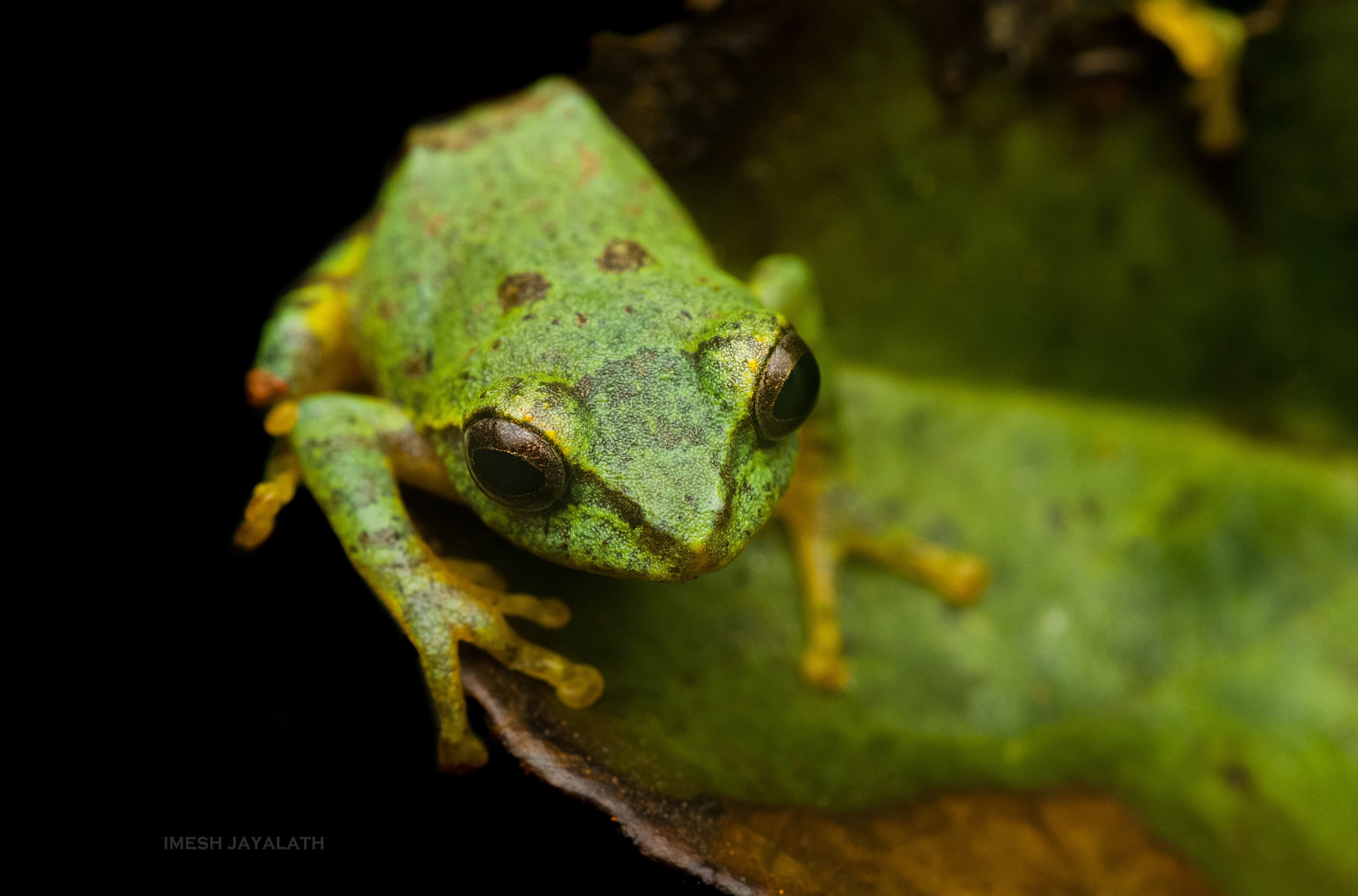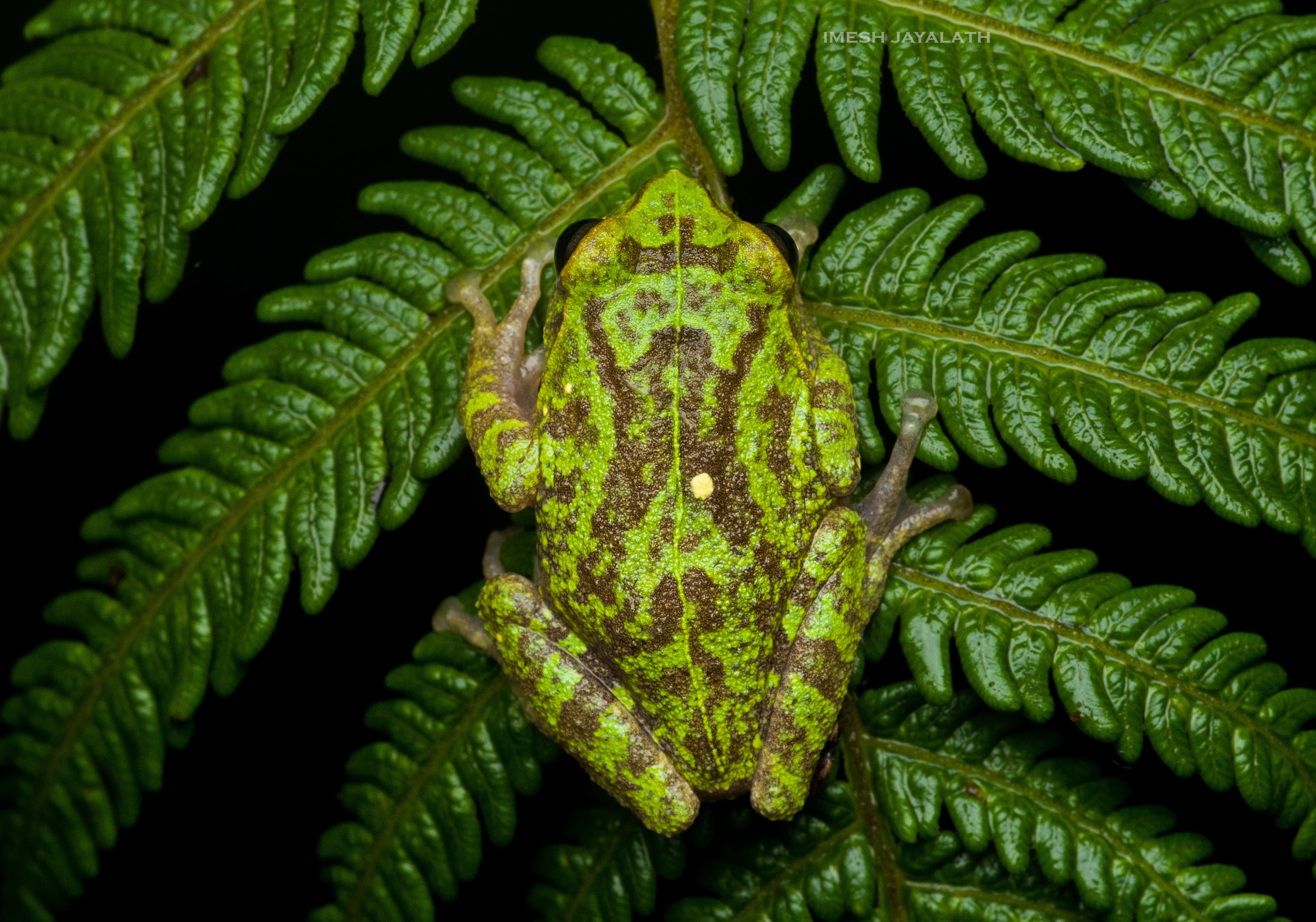
Contributor

Frankenberg's Shrub Frog
Pseudophilautus frankenbergi is a frog species found exclusively at the highest elevations of Sri Lanka. Its population is restricted to a small range within montane forests that have a well-developed canopy, at elevations exceeding 1850 meters above sea level. This species has been observed perched on shrubs in high-altitude locations such as the Namunukula mountain range and Horton Plains National Park. The exact reason for its confinement to these elevations remains unclear, but it is likely influenced by high humidity and low temperatures. Given its sensitivity to environmental changes, particularly rising global temperatures, this species faces a significant risk of extinction due to climate change.

Frankenberg's Shrub Frog
This moderately sized frog has a snout-vent length of 26.7–29.3 mm in males and a robust body with a dorsally flattened head. Its snout is rounded in lateral view, with sharp canthal edges and a concave loreal region. The tympanum is distinct and oval-shaped, while other structures such as the vomerine ridge, pineal ocellus, and cephalic ridges are absent. It has a well-defined supratympanic fold, lateral dermal fringes on the fingers, and rudimentary webbing between them, whereas the toes are fully webbed. The dorsal surface is shagreened, with glandular warts present on the head's sides, forelimbs, and shank, while the belly and throat are granular. In its natural coloration, the dorsum is ashy brown, with dark brown markings on the canthal edges, loreal, and temporal regions, while its limbs exhibit dark crossbars. Some individuals may also have reddish-brown dots or a dark-brown interorbital bar.

Frankenberg's Shrub Frog
This species is confined to elevations between 1700 and 2300 meters in the Central Hills of Sri Lanka, where it inhabits microhabitats within dense montane forests and cardamom plantations. Males are known to call from heights of 1–3 meters while perched on branches or large leaves in the sub-canopy. Their specialized habitat preference and limited distribution make them particularly vulnerable to environmental changes, emphasizing the need for conservation efforts to ensure their survival.